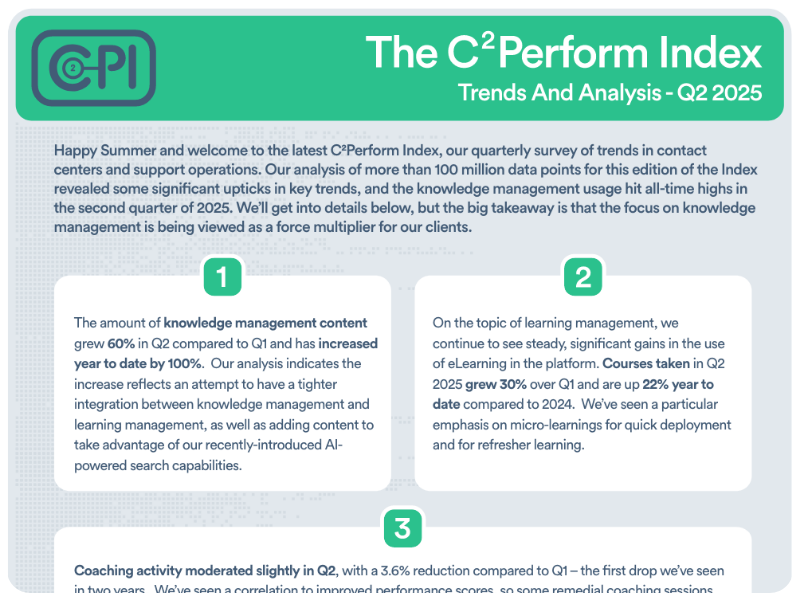Every organization has departments, processes, and goals. They also usually have key team players who help them run like a well-oiled machine. Their go-to individuals who know when something was done, by whom, and what to do next. But none of these things happen by luck or happenstance. Behind the scenes of every successful enterprise, there are robust performance management strategies in place.
But is it really important if your teams already know what they’re doing? If so, what are some tips for new managers so they can ensure the success of all projects? And how can you develop effective performance improvement plans when you’ve identified a gap between expectations and employee performance?
Why Is Performance Management Important?
Running a business without performance management is like traveling with no compass (or GPS, for the newer generations). You may think you’re headed in a specific direction, but you don’t really have a way to gauge whether you’re on the right track.
How will you get there? What do you need to get there? When will you get there? Performance management provides you and your teams with a roadmap of which tasks need to be completed, and how to get them done.
Performance Management Tips for New Managers
While every company is different and has varying needs, there are several performance management best practices that are beneficial to all entities, across the board. These include:
Communication
In order for people to carry out their job duties effectively, they have to know exactly what is expected. This includes processes, resources, tools, budget, and deadlines. By the same token, leadership should encourage employees to speak up when they don’t feel like they can complete a task within a specific timeframe, and why.
It is much better to be honest about needing additional training than to provide lackluster work product that won’t make the client happy. So, look for tools that can enable you to communicate effectively with all team members.
Prioritization
If everything is a priority, nothing is a priority. Flesh out what needs to get done as soon as possible, and once you’ve established a hierarchy, don’t change it two days later (unless, of course, some unforeseen circumstances come up). Projects should not feel like items on a conveyor belt. Being able to focus on what has priority will ensure that it gets done well, the first time.
Regularly Checking In
You don’t have to micromanage—in fact, it can prove to be counter-productive. But you can still ensure everyone stays on track to completing their tasks on time by setting up recurring meetings to discuss the status of each task. This way you can identify any hurdles and iron them out before they become a major issue and delay a project.
Performance Evaluations
Performance evaluations are an excellent way to provide feedback to employees regarding how they’re performing their duties. What can be improved? What is being done well and deserves acknowledgement?
By the same token, they should be able to express how they can better perform their jobs, even if this means pointing out company shortcomings (e.g. outdated technologies, duplicative efforts, etc…). Keep everything in writing, so that all parties can refer back to it whenever they need to.
Identifying Strengths
Sometimes, a person can be a great team member, but all their skills may lie elsewhere. Do you have a client-facing employee who works best on their own? Can they be moved to a department where they would be able to perform their duties without interacting regularly with clients? Or vice versa.
Do you have anyone behind the scenes who would be great as a spokesperson for your company? Look at their track record and ask them specifically which responsibilities they would enjoy the most.
Measuring KPIs
You can’t track what you don’t measure. Key performance indicators (KPIs) that help you track productivity will vary based on job roles. For example, customer service reps can be evaluated based on the number of support tickets they attend to, average resolution time, whether there are any repeat issues regarding the same ticket, and positive customer satisfaction scores.
Marketing teams can be evaluated based on the number of tasks completed, the leads generated by their content if its a lead gen piece, or revenue generated if it’s a revenue marketing piece, etc…
Technology
Everyone needs adequate technologies to perform their jobs. This includes everything from the devices they work from, to the software and other SaaS solutions that enable them to communicate and work efficiently.
Examples of these technologies include project management and performance appraisal software, where you can have a visual representation of how everything is moving along and what has been completed.
Sample Performance Improvement Plan (PIP) Outline
If you notice that there are employees who are not performing at their best, you should develop an improvement plan to provide everyone with some guidance.
An effective Performance Improvement Plan (PIP) should always include the following components:
1. Specific Goals
When defining your goals, implement the SMART goals methodology: Specific, measurable, attainable, relevant, and time-bound).
Instead of saying that you want them to help increase revenue, state something along the lines of: “Increase revenue by 20% by the end of the quarter by doing XYZ”.
Use technology to track its progress. You can set up customized dashboards to let you visualize the metrics you wish to see.
When you provide them with a percentage, make sure that you have a basis for that number. Is it past performance? Is it based on specific studies? Have similarly situated companies achieved something similar?
It should go without saying that their tasks should be relevant to the stated goals and their job roles within them. And the deadline incentivizes them to put the plan into action sooner, rather than later.
2. Identified Performance Issues
Let team members know the areas they need to work on. Instead of general directives, such as “work more efficiently,” specify how.
For example, being more thorough in the research process and providing their sources. Or if you notice that a service rep has to put callers on hold frequently, provide them with access to a customer relationship management (CRM) platform, where they can find everything they need in one centralized location.
Tell them exactly what the issues are, so that they know what to work on.
3. Actionable Steps to Fix Them
Let them know exactly where to start with their next steps. Is it more training? Obtaining specific certifications? Reviewing certain processes?
Make a To-Do list they can follow, and timelines to complete them by. You can also include incentives to keep them motivated, such as a point system or other gamification elements to get them excited to meet certain milestones.
4. A List and Description of Resources
In addition to identifying what needs to be fixed and whether they need more training, make sure they have all of the tools to do it successfully — and include them on the plan.
List software, login information, features within it, knowledge base articles, and/or continuing education courses. It would also be helpful to identify other team members they can reach out to if they have questions or need mentoring.
5. Scheduled Regular Check-Ins
Decide on how often you’re going to meet to track progress and put it in writing. This shouldn’t be frequent enough that it interrupts productivity, but regular enough to ensure that you’re moving the needle. Weekly or bi-weekly is a good interval.
Once you’ve had a chance to discuss the PIP with your team members, provide them with a copy and make sure you and each employee signs it. Also, include a copy in their employee file.
The Takeaway
The purpose of any business is to serve their target audience and be profitable. But achieving those goals requires a committed team who actually enjoys their work and who would enjoy staying with your company long-term.
Always remember to provide as much guidance as possible, to always be willing to listen to employee insights and feedback, and to look for ways to have a genuine dialogue so that you can reach your business objectives and have your employees feel heard and valued.
Need help managing employees? Reach out to us today to get started!
 English
English Español
Español









